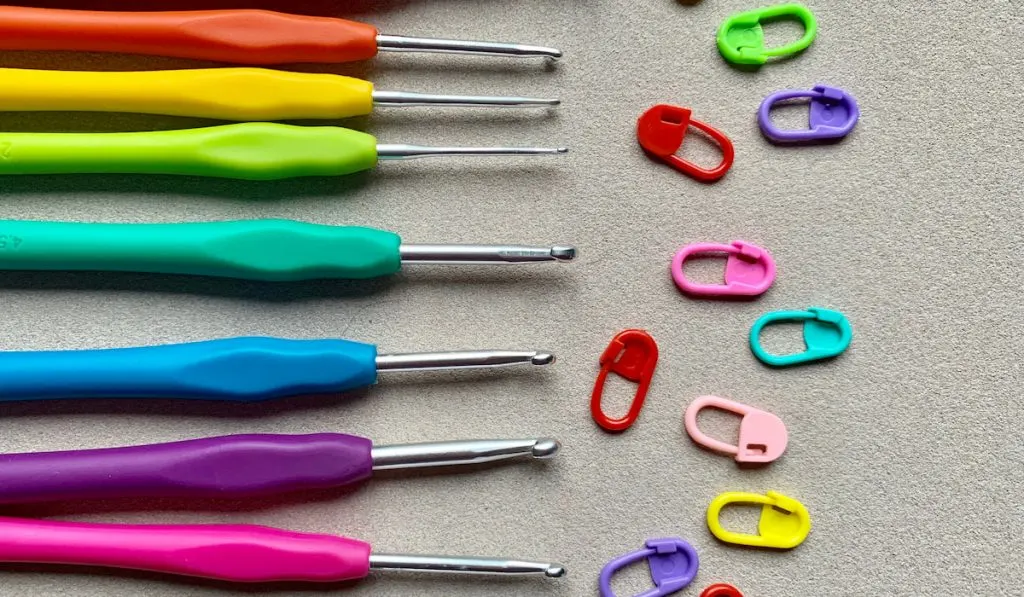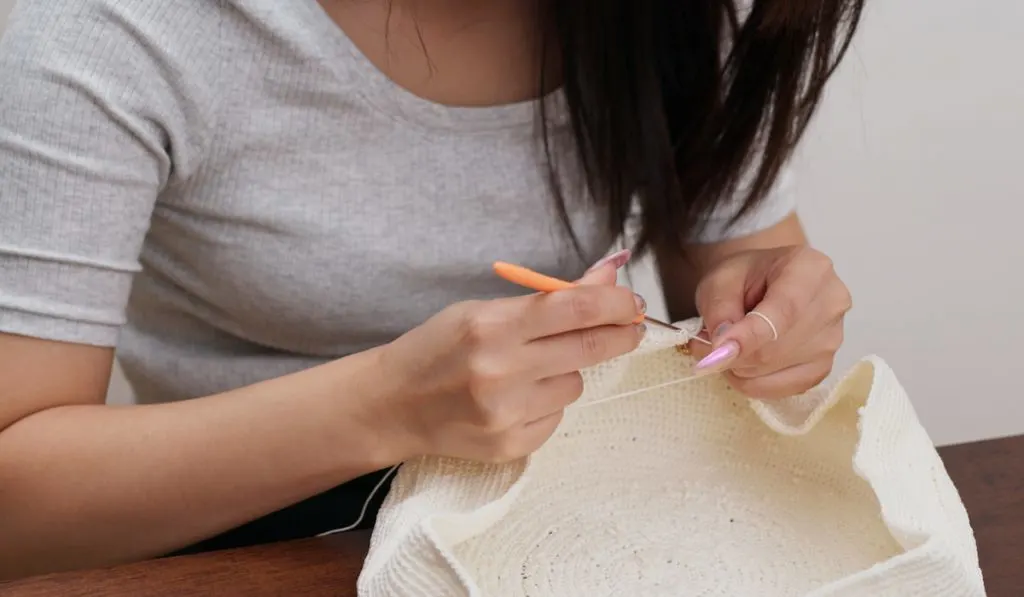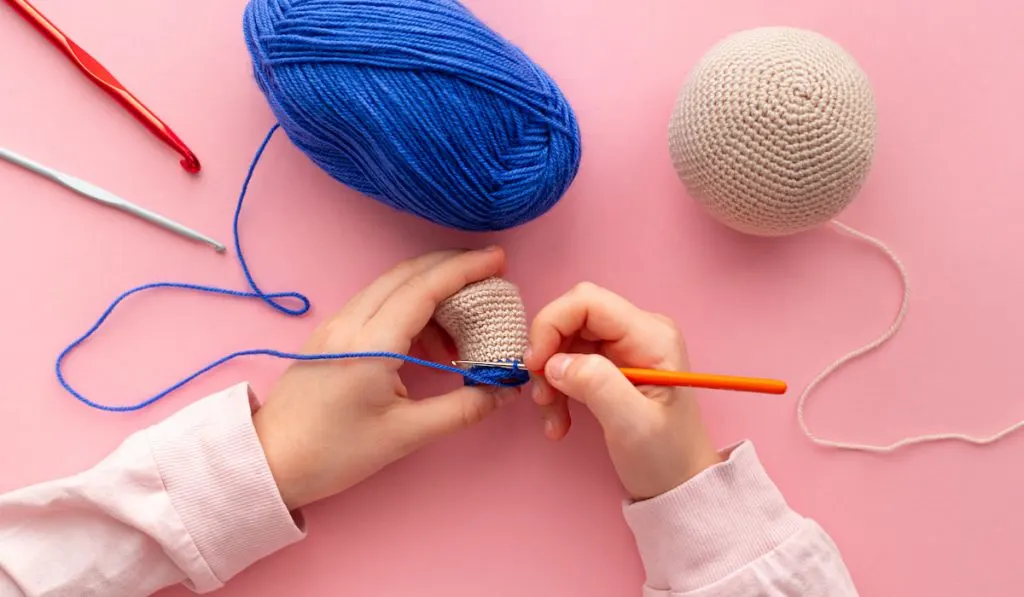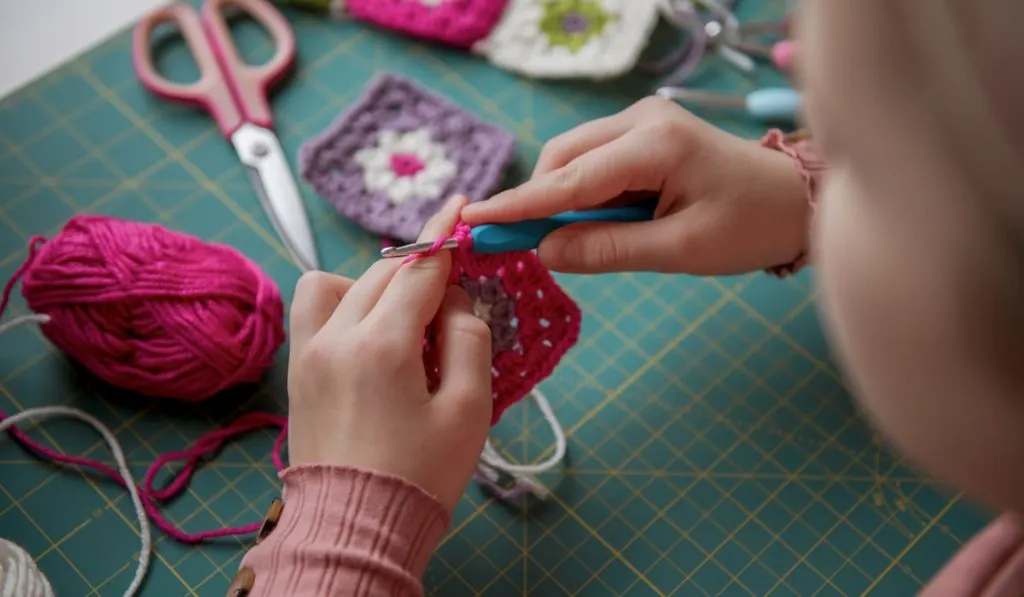If you spend long periods crocheting, people must have told you to get an ergonomic crochet hook instead of a regular one. Of course, you were also told that they are better than the usual crochet hooks. However, no one actually told you why ergonomic crochet hooks are the better option. So, you keep wondering why you should opt for them.
Why are ergonomic crochet hooks better?
Ergonomic crochet hooks are better because, unlike regular crochet hooks, they are more comfortable. They also offer better grip, and you are less likely to feel tension and pain in your fingers, wrist, and arm when you use them.
If you ever needed more reasons to dump your regular crochet hooks and switch to ergonomic crochet hooks, you are on the right page. Below, we go over the reasons ergonomic crochet hooks are better than regular ones. We also answer some other questions about ergonomic crochet hooks.
What Are Ergonomic Crochet Hooks?
Ergonomic means designed for efficiency, comfort, ease of use, and safety. So, at the simplest, you can say ergonomic crochet hooks are crochet hooks that offer the utmost comfort to crocheters.
When some crocheters crochet for long periods, they experience tension and pain in some parts of their hands.
The repeated motions required for crocheting strain the wrists, fingers, and arms.
Hence, the pain and tension.
To alleviate or prevent the tension and pain described above, people usually switch to ergonomic crochet hooks. From all indications, this switch is effective in most people.
Ergonomic crochet hooks perform basically the same function as regular crochet hooks. However, the difference lies in their handles.
Ergonomic crochet hooks come with softer, thicker handles than regular crochet hooks. And this handle makes all the difference.
At first, you may wonder how a thicker/larger handle keeps you from feeling pain while crocheting. But according to anecdotal pieces of evidence, they are pretty effective.

Why Are Ergonomic Crochet Hooks Better?
Most people find comfort with ergonomic crochet hooks in their hands. So, from all indications, they are typically better than regular hooks. But why are ergonomic crochet hooks better than the usual crochet hooks? Let us find out.
1. Their Handles Are Made of a Soft Material
The handles of ergonomic crochet hooks are typically made of soft materials, like wood, flexible plastic, or foam.
Unlike the rigid handles of regular/plain crochet hooks, the soft handles of ergonomic crochet hooks are easy on your hands. This is understandable because when you apply pressure on a rigid material, you will feel strain quicker than a soft one.
2. Ergonomic Crochet Hooks Usually Have No Sharp Edges
The edges of the thumb rest of a regular crochet hook are somewhat sharp and tapered. So, if you hold them long enough, your fingers will suffer some strain.
Besides straining, your fingers may also get irritated, or you may get a cut with prolonged use.
Ergonomic crochet hooks typically have no sharp edges. Their edges are usually smooth and round. So, they are less likely to strain, irritate, or cut your finger.
3. The Handles of Ergonomic Crochet Hooks Are Designed for Comfort
While some ergonomic crochet hooks have plain handles, others have contoured/shaped handles.
The contours in the handgrip of ergonomic crochet hooks are not necessarily for aesthetics. They are actually in place to keep your hands in a naturally comfortable position. This way, you can readily get your hands and fingers in place when you hold the hook.
Also, with the contours, you can hold the hook for long periods without muscular strain.
4. The Soft Handles of Ergonomic Crochet Hooks Promote Grip

As we already said, the contours in the handles get your hands in position for a comfortable grip. But beyond that, the soft handles of ergonomic crochet hooks can promote grip by preventing slippage.
The materials (such as rubber) used in making the handles of ergonomic crochet hooks have significant friction. So, they will not readily slip when you hold them in your hands. Besides, when you grip such soft handles, your fingers sink into them a bit, further securing your grip.
It goes without saying, but if your crochet hook slips out of your hand frequently, you will get frustrated. So, ergonomic crochet hooks do more than just ease pain and tension; they can keep you from getting frustrated.
In summary, ergonomic crochet hooks are better because:
- They are less likely to strain, irritate, or cut your hands.
- Their design allows them to keep your fingers in the most comfortable position.
- They provide a grip that is comfortable yet firm.
One interesting to note is that while ergonomic crochet hooks are generally effective, you may never know which will work for you until you try. Factors like handle size and how you hold your hook will influence the product that ultimately works for you. So, take note of these when switching to ergonomic crochet hooks.
If Your Hands Are Arthritic, Is It Better to Use Ergonomic Crochet Hooks?
Compared to regular aluminum crochet hooks, ergonomic crochet hooks are better for arthritic hands. They are also a better option for tendonitis and any other condition that makes crocheting painful.
The comfortable and firm grip, lower muscle strain, and ergonomic contours offered by the handles of ergonomic crochet hooks lessen the arthritic pain. So, crocheting can be more bearable for you.
Other Ways to Ease Crocheting Pain
Besides switching to ergonomic crocheting hooks, you can ease crocheting pain by doing the following:
- Wrist exercises – if you suffer wrist pain while crocheting, routine wrist exercises might help. With regular wrist exercises, your wrist will adapt to the repetitive motions of crocheting. This may leave you feeling less pain than usual.
- Take breaks – when crocheting for extended periods, take breaks. Let your wrist rest at intervals and stretch them.
- Do Not Go Over Your Body’s Limit – our bodies have their limits. You may not be able to crochet for as long as someone else can. Pay attention to your body, and stop crocheting when you are at your limit. This way, you will experience little or no pain.
How to Grip an Ergonomic Crochet Hook
You can hold an ergonomic crochet hook the same way you would hold the usual crochet hook. Primarily, people grip crochet hooks in two ways: knife hold and pencil grip.
Pencil Grip

The pencil grip is just as it sounds; you hold the crochet hook like a pencil. The pencil grip is an underhand hold since the arm and wrist movements do most of the crocheting.
The pencil grip involves you holding the hook with your thumb and index finger the same way you’d grip a pencil. But there are some variations, and we’ll talk about two of them: pinky fly hold and chopstick hold.
Pinky Fly Hold
The pinky fly hold is pretty similar to holding a teacup. You grip the crochet hook with your index finger and thumb. Then you bring your middle finger close to your index finger while keeping your pinky and ring fingers afloat.
The pinky finger stays afloat or “flies,” hence, the name of this pencil grip variation.
Chopstick Hold
The chopstick hold involves holding the crochet hook with your index finger and thumb – like a pencil. However, besides the index finger and thumb, rest your middle finger on the shaft of the hook.
When you do the chopstick hold, the middle finger plays a significant role in the movement of the hook. So, unsurprisingly, it is a natural hold for people who frequently type, people with long fingers, and people who play instruments.
Knife Grip
The knife grip is an overhand hold since the fingers do most of the work. It involves holding the thumb rest of the crochet hook with your index finger and thumb, while the hook’s handle rests on your palm and the remaining fingers.
Like the pencil grip, the knife grip has variations, and we’ll talk about two of them: saber hold and wrappers hold.

Saber Hold
The difference between the saber hold and the usual knife grip is the finger that leads. In other words, in the saber hold, you grip the crochet hook the same way you will in the knife grip.
However, instead of leading with the index finger as you will in the knife grip, you lead with your thumb. That is to say, you initiate the movement of the hook with your thumb.
Wrappers Hold
Wrappers hold the crochet hook in the same way as the knife grip. However, they also get their other hand involved in the crocheting process.
When doing the wrappers hold, hold the crochet hook in the knife grip with your dominant hand. Then, wrap the yarn around the crochet hook with your other hand.
Most people who do the knife grip clasp the hook and wrap yarn around it using their dominant hand. This is why the wrappers hold is not the same as the knife grip.
Final Thoughts
It may take time to get used to an ergonomic crochet hook if you are in the habit of using regular crochet hooks. But if you want maximum comfort, top-notch grip, and little or no strain while crocheting, ergonomic crochet hooks should help.
Resources
- https://lovelifeyarn.com/ergonomic-crochet-hooks/
- https://crafttribeonline.com/are-ergonomic-crochet-hooks-actually-worth-it/
- https://www.shinyhappyworld.com/2012/11/what-is-an-ergonomic-crochet-hook-do-you-need-one.html
- https://www.cableorganizer.com/learning-center/articles/ergonomic-hand-tools.html
- https://www.sciencefocus.com/science/why-does-rubber-have-high-friction/
